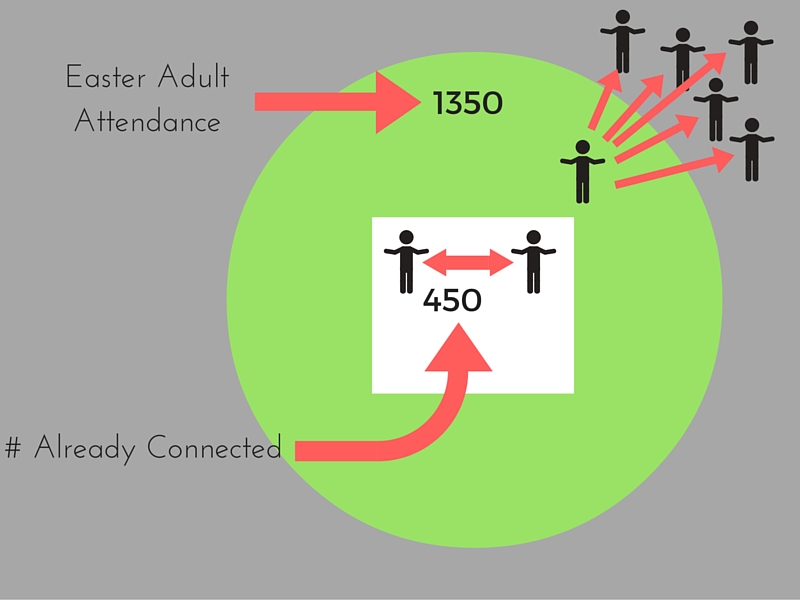This Concept Might Change Your Strategy
 Spoiler Alert: The most connected people in your congregation almost always have the fewest connections in the community.
Spoiler Alert: The most connected people in your congregation almost always have the fewest connections in the community.
The most connected people in your congregation almost always have the fewest connections in the community. Click To Tweet
Four Things You Need to Know
I use this drawing to illustrate an important concept. There are four things you need to know in order to understand the drawing,
First, the circle represents your adult attendance on Easter. As you know, the difference between your average adult attendance and your Easter adult attendance is not that everyone brings a friend. Instead, the main reason your attendance is higher on Easter is that everyone comes on the same weekend. See also, What Percentage of Your Adults Are Actually Connected?
Second, the square represents the people in your congregation who are truly connected. That is, if something happened to them or a member of their family, someone else in your congregation would find out about it within 24 hours without anyone calling the church. A pink slip at work. Marital issues. A scary medical diagnosis. A teenager who goes south. 24 hours. Someone else knows.
Third, if you were to interview the folks in the square (the most connected people in your congregation) and ask who their 10 closest friends are in your area, you’d find out that 8, 9, or even all 10 of them are also inside the square. Now, before you get excited, there are exceptions (many church staff members, those with the gift of evangelism, etc.). But in general, the most connected people in your congregation are the least connected in the community.
Fourth, when you interview the folks in the circle you’ll find out that 8, 9, or even all 10 of their best friends have never been to your church. Let me repeat that:
When you interview the folks in the circle you’ll find out that 8, 9, or even all 10 of their best friends have never been to your church.
Here’s the big idea: If you want to recruit hosts who can fill their own group with unconnected neighbors, friends, co-workers and family members…you need to learn how to recruit from the circle. Churches that keep going back to the well of the usual suspects (the most connected) shouldn’t be surprised when hosts from the square don’t know their neighbors.
What do you think? Have a question? Want to argue? You can click here to jump into the conversation.
Further Reading:

